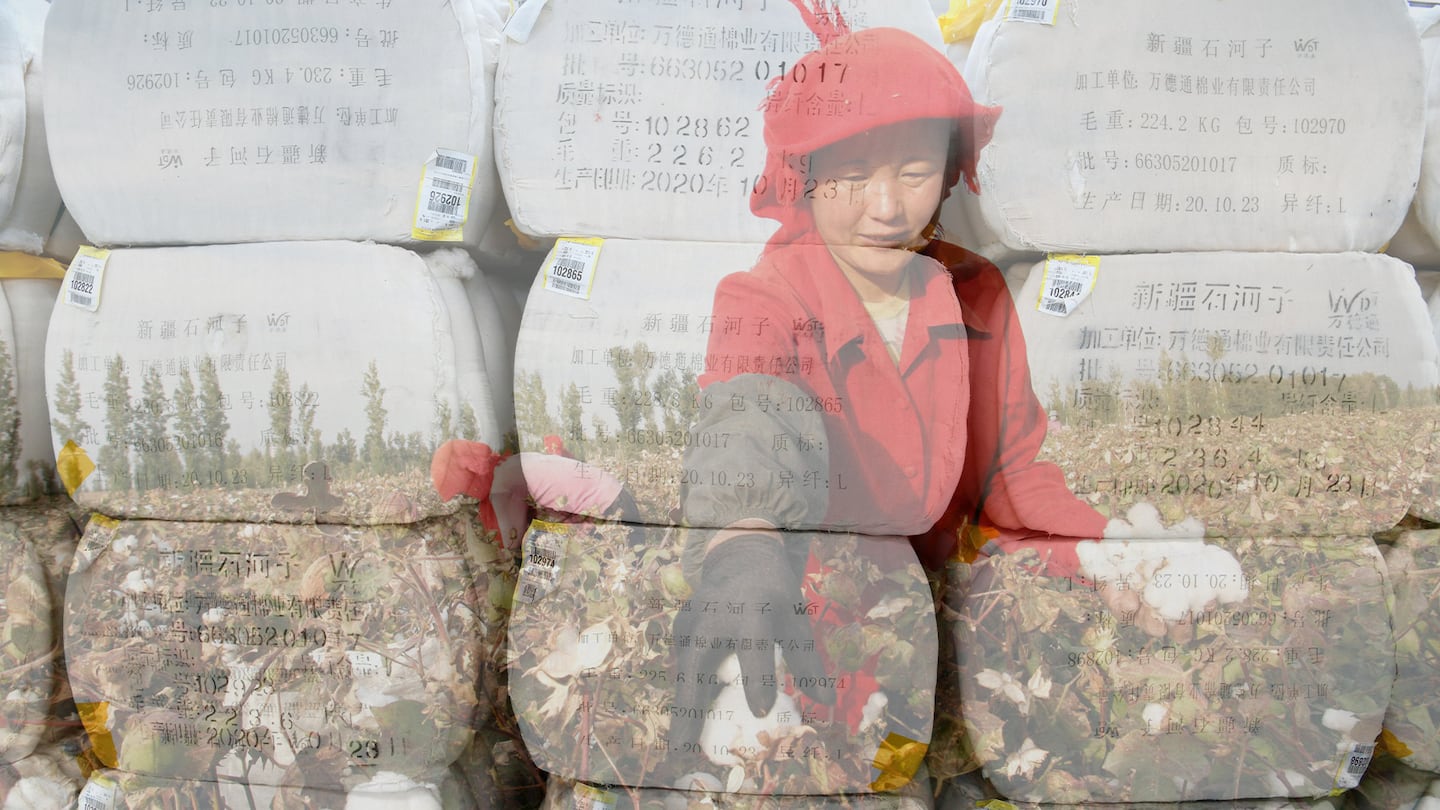
The Business of Fashion
Agenda-setting intelligence, analysis and advice for the global fashion community.

Agenda-setting intelligence, analysis and advice for the global fashion community.

As the US moves to crack down on goods that may be linked to forced labour in China’s northwestern Xinjiang region, it is demanding fashion brands importing to the US show who made their clothes and the materials in them.
A new law that came into force on Tuesday requires companies to prove any imports to the country that could be linked to the region are free of forced labour, adding an unprecedented regulatory layer to calls for greater supply chain oversight in the industry.
Cotton in particular has become a flashpoint — roughly 20 percent of the world’s cotton is produced in China, and most of that in Xinjiang where the Chinese government is accused of carrying out a years-long repression, detention and labour programme against Uighur muslims and other ethnic minorities. (Beijing has repeatedly denied allegations that minorities are forced to work against their will and says its policies are lifting the region out of poverty and countering extremism.)
The US banned imports of cotton and a handful of other products from Xinjiang last year. But the new law has both ratcheted up the scope of restrictions and the power bestowed on border authorities to block or seize goods they believe may be linked to forced labour in China.
ADVERTISEMENT
For brands, it imposes a burden of traceability that has just become much more pressing.
Fashion companies do not want forced labour in their supply chains. But the unpleasant truth is that few of them have enough insight into where they source from to credibly guarantee their products are free of any taint.
This is true even of the industry’s biggest and best-resourced businesses. Nearly a third of the companies assessed in The BoF Sustainability Index 2022 do not provide sufficient public information to suggest they have a full understanding of even their direct suppliers. A similarly limited number publish information indicating they are assessing human rights risks across their full supply chain. None indicate an ambition to achieve full supply chain traceability.
Tackling the opacity within fashion’s supply chains that enables human rights abuses to go undetected and challenges efforts to establish accountability or track progress on environmental goals is one of the key levers of change identified in the report.
The regulatory crackdown in the US has both helped prompt action to establish more robust traceability in fashion’s supply chains and revealed the inadequacy of the current systems in place.
More than 100 well-known brands, including H&M, Nike and Ralph Lauren, remained at risk of sourcing cotton from Xinjiang via third-party intermediaries that effectively “launder” the material, according to a study published in December by Sheffield Hallam University’s Helena Kennedy Centre for International Justice. H&M declined to comment. Nike and Ralph Lauren did not respond to a request for comment.
On the flipside, the Uighur Forced Labour Prevention Act that came into force on Tuesday steps up the onus on companies to prove their supply chains are free of forced labour. It represents a sweeping ban on any goods made even partially in Xinjiang or linked to the region’s labour camps and shifts the burden of proving this onto companies.
The Biden administration has said it plans to fully enforce the law. High-risk sectors like apparel are likely to face enhanced checks from US Customs and Border Protection, even if shipping from other countries, global risk consultancy Maplecroft said in a briefing note last month.
ADVERTISEMENT
The existing ban on cotton imports from Xinjiang has already prompted many apparel companies to seek out new suppliers and step up supply chain due diligence, though in many cases this has been done quietly to avoid backlash in China. Companies are also looking at DNA tracing and blockchain-based platforms to help build more transparency into their supply chains. The new law is a big push to establish much more robust oversight right down to the raw material level.
Until now, “it’s been a free for all; there’s been no meaningful regulation,” said Scott Nova, executive director of the Worker Rights Consortium, a steering committee member of the Coalition to End Forced Labour in the Uyghur Region. “The industry likes to put out the idea that this is impossible, that the true source is some kind of unfathomable mystery. But it’s not. It just requires significant effort.”
The fashion industry continues to advance voluntary and unlikely solutions to its plastic problem. Only higher prices will flip the script, writes Kenneth P. Pucker.
The outerwear company is set to start selling wetsuits made in part by harvesting materials from old ones.
Companies like Hermès, Kering and LVMH say they have spent millions to ensure they are sourcing crocodile and snakeskin leathers responsibly. But critics say incidents like the recent smuggling conviction of designer Nancy Gonzalez show loopholes persist despite tightening controls.
Europe’s Parliament has signed off rules that will make brands more accountable for what happens in their supply chains, ban products made with forced labour and set new environmental standards for the design and disposal of products.